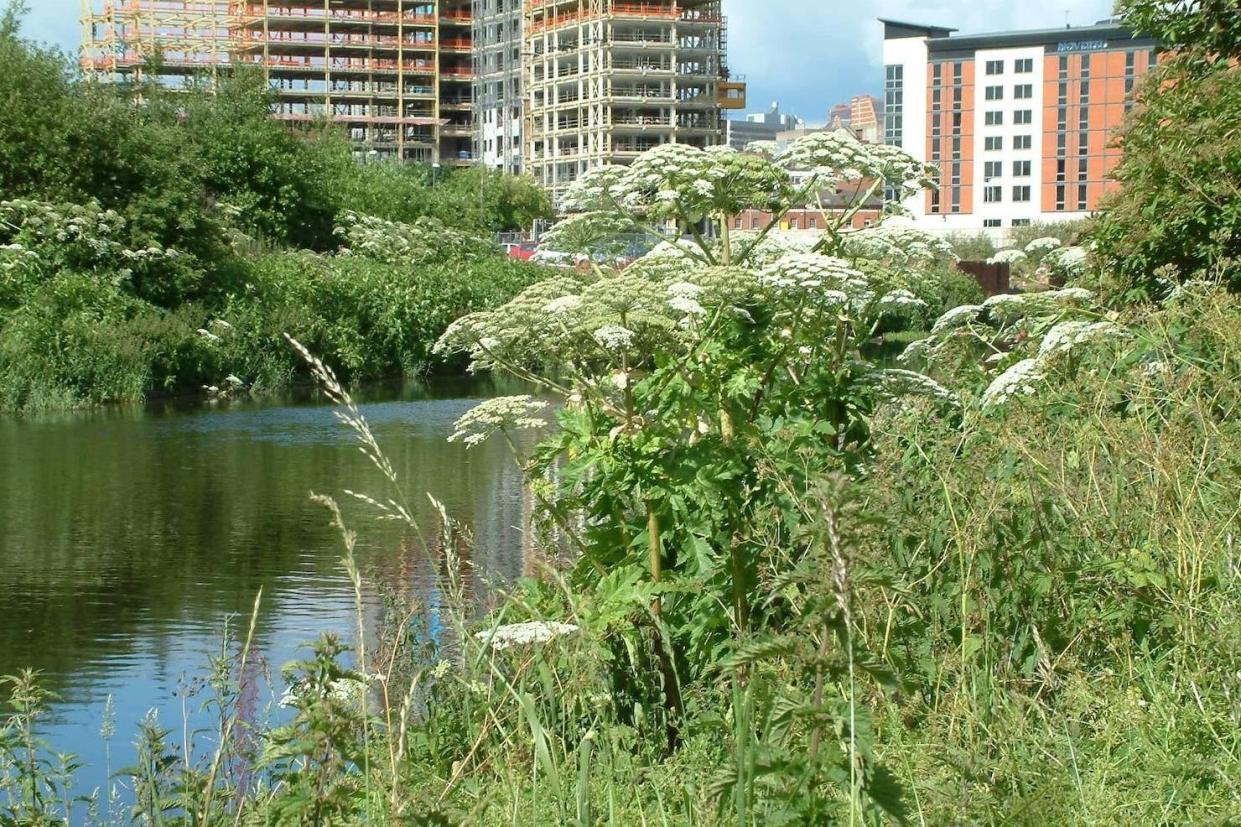Giant hogweed in UK: Has 'Britain's most dangerous plant' really boomed?

The heatwave has been blamed for a boom in “Britain’s most dangerous plant” which can cause horrific burns.
Giant hogweed, prevalent on riversides across the country, can lead to blistering if skin is exposed to its sap and advice says it should not be tackled in bright sunlight.
Recent headlines have claimed the hot weather this summer has led to an explosion in the plant, which was brought into Britain by Victorian collectors and has gone on to invade the UK.
But horticulture experts have cast doubt on the claims, with two major organisations saying they have not seen a rise in complaints.

Guy Barter, chief horticultural advisor at the Royal Horticultural Society, said: “We haven’t had any gardening enquiries about it.
“I suspect from reading the press and suchlike that, during the heatwave, people were out and about more.

“They’ve been hanging around at places where it tends to thrive and coming a cropper if they get sap on their skin.”
Giant hogweed
The invasive plant originally comes from Russia and Georgia.
It is most likely to be seen from spring to autumn. The best chance to tackle it is summer.
Chemicals in its sap cause photosensitivity, making the skin at risk of blistering.
The first documented plants in London were at Kew Gardens in 1817.
It can be recognised by its thick bristled stems with purple specks and white flowers.
Allowing hogweed to grow in the wild is an offence under the Wildlife and Countryside Act 1981.
If tackling the plant, gardeners are advised to wear protective clothing.
People who come into contact with it are advised to cover the affected area and wash it with soap and water.
Jonathan Hart-Woods, senior ecologist at the Canal & River Trust, agreed: “We’ve not seen any increase this year and I don’t think the heatwave would make much impact on it.”
“It’s possible with this unseasonably warm weather there could be some high germinations rates in some areas. But I can’t say we’ve noticed that this year.”
The weed is spread through its seeds which disperse either by catching the wind or travel much longer distances by falling into rivers and streams.
But one thing experts agree on is the plant, which can grow up to 20ft high and has flowers the size of dinner plates, is extremely hazardous.
Mr Hart-Woods explained: “It reacts if it touches your skin and can cause blistering that look like quite a bad burn. The concern if you’re a landowner is that it’s a very attractive plant for kids.”
He said the plant required landowners to call in contractors to deal with it, resulting in an annual cost to the UK potentially running into millions of pounds.
Mr Barter advised homeowners who find it growing on their property to keep “well away” and take precautions, including not tackling it during bright sunlight.
The sap causes photosensitivity on the skin, leading to nasty blisters.
Two years ago, five young children suffered severe burns from the plant while playing in a Bolton park. One seven-year-old girl was left with permanent scarring.

 Yahoo News
Yahoo News 
